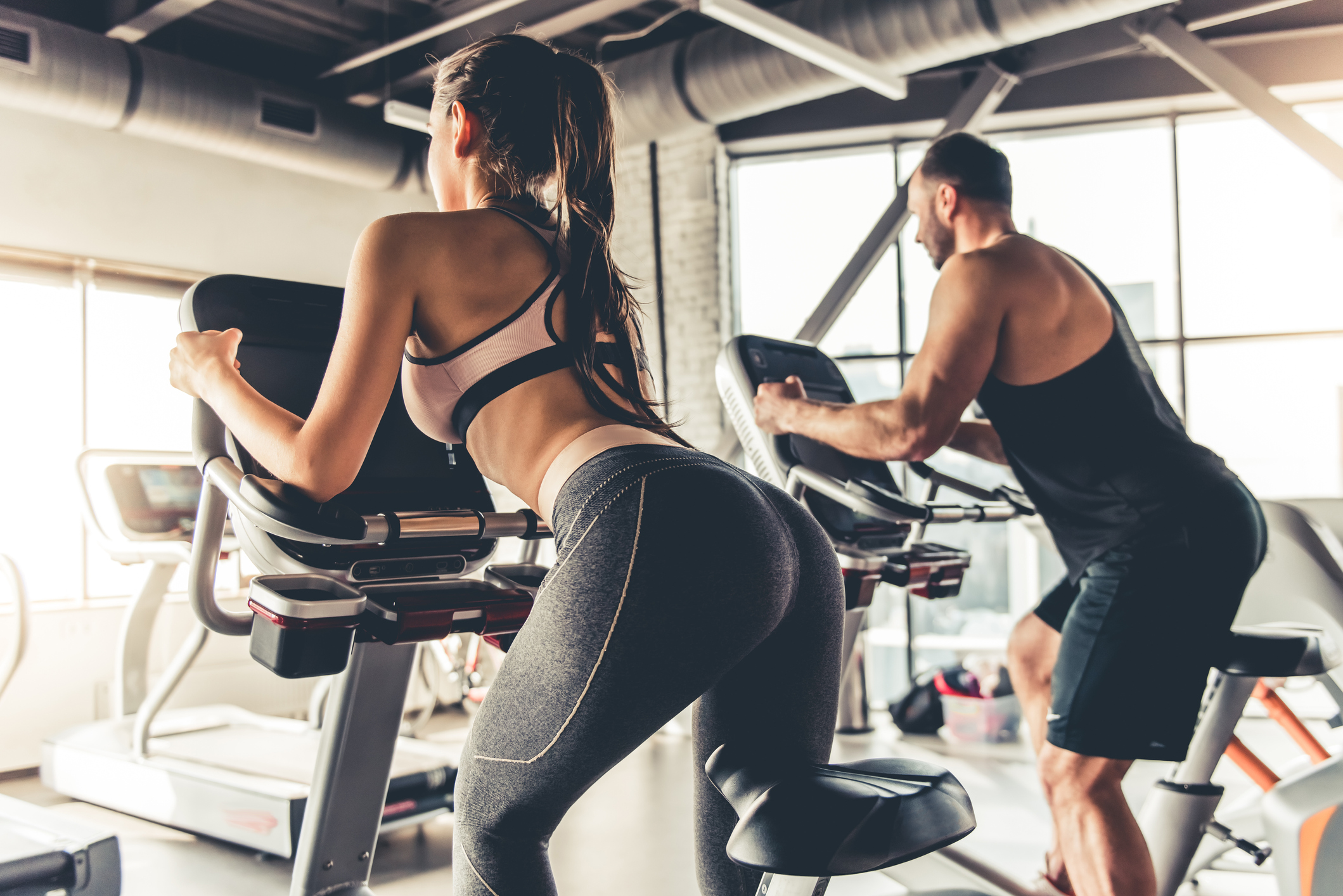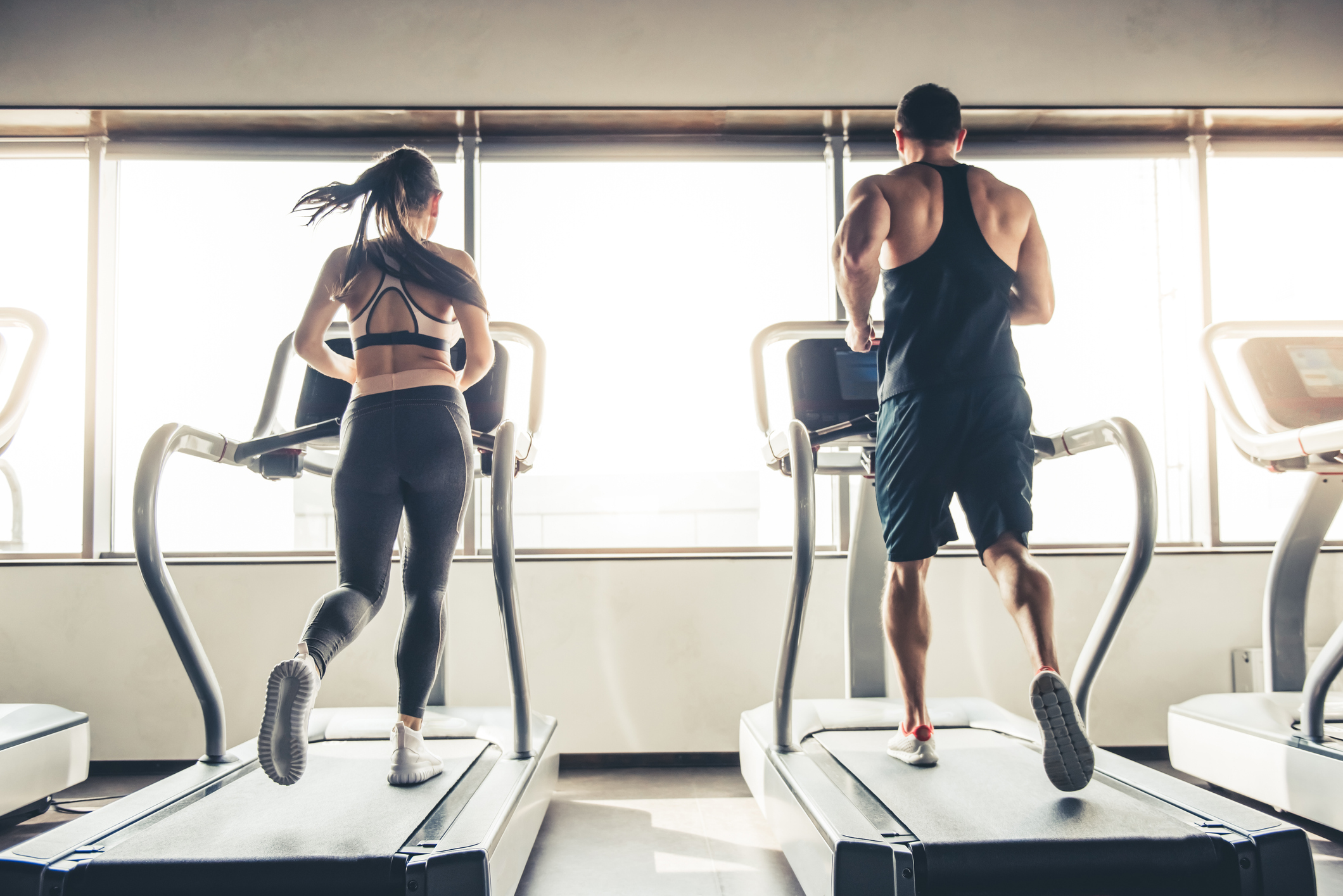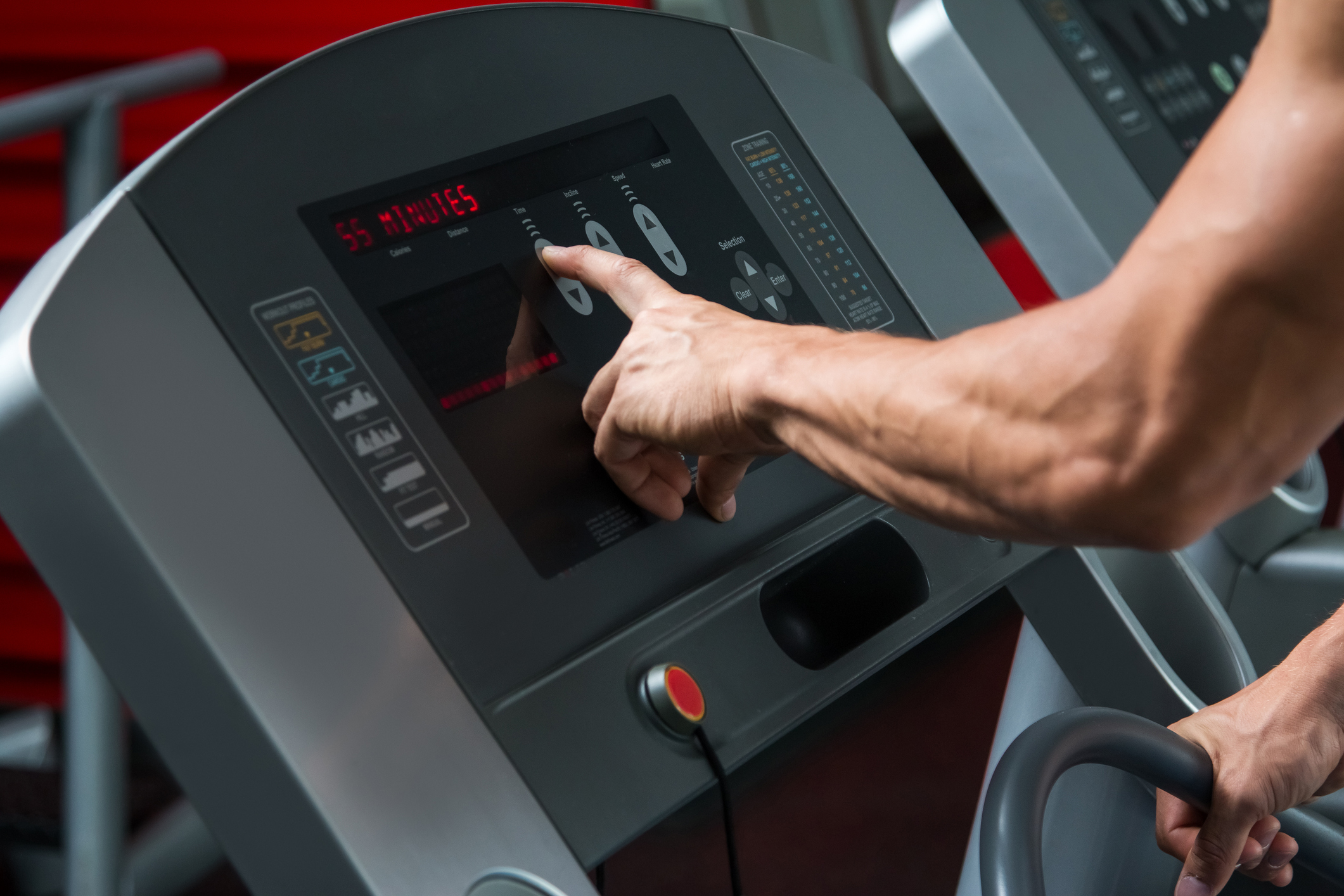HIIT Cardio For Maximum Fat Loss

Shawn Phillips was the first person to ever write about HIIT cardio in a fitness magazine. The following article was published in the August 1998 issue of MUSCLE MEDIA.

What if I told you how to lose all your unwanted body fat in just two short weeks with little or no effort? Well, dream on, buddy. It ain’t gonna happen. Losing body fat takes work. There are no shortcuts or magic pills (yet). But I will let you in on an effective way to lose body fat without turning into some automaton that sits on a stationary bicycle for hours on end daydreaming about the things it would rather be doing. Granted, most of us are not competitive bodybuilders who have to diet for competitions. For some people, this is powerful ammunition to stay in a perpetual “growth phase” 52 weeks a year (i.e., eating lots and lots to hopefully divert some of those nutrients into muscle mass). For others, it’s just an excuse to turn into a lard butt. Try this simple test to determine whether or not you’re carrying too much body fat. Take off your shirt in the gym. If a group of people suddenly stop what they’re doing, fall to the floor, and begin frantically churning out ab crunches, it’s a pretty safe bet you’re approaching the tubby stage. Wearing long-sleeved baggy shirts and sweat pants to the gym all the time is another indication you’ve spent too long in the bulking phase. Here’s what I’m proposing: Commit eight measly weeks of your bodybuilding life to shedding excess fat and see if you don’t look and feel a ton better. If you don’t like the idea of doing cardio, I understand your reluctance. I have good news for you. I’ve discovered a “better way” to burn off that unwanted body fat. And it takes only 4 to 15 minutes a day! If you think it’s something you can deal with, then try sticking with it, and I bet you’ll be wearing tank tops to the gym in no time. After all, the leaner you get, the bigger you look. Before long, people will be accusing you of all kinds of pharmaceutical indiscretions. (“I just know that sum’ beech is on somethin’!”) Besides, shedding the excess fat to expose your muscularity is a great way to gauge your progress, sharpen your eating habits, and best of all, stimulate you psychologically so your workouts will improve and you’ll experience a burst in muscle growth

Steady State Cardio Is Old School
I know, I know, you already spend enough time in the gym, Your friends and family, prone to exaggeration, already think you have a little cot in the back of the gym with all your inspiration photos tacked on the wall. Nonetheless, I’m going to ask you to add aerobic exercise to your workout schedule. Don’t worry, though, I’m well aware the prospect of spending ant one. Most bodybuilders, myself included, are an action oriented breed. We can’t stand to wait in lines, think FedEx is too damn slow, and have a hell of a time sitting down long enough to write an article.
Our need for high levels of stimulation make the prospect of low-intensity aerobic training almost intolerable. Truth be told, I can force myself to sit on an exercise bike for an hour, but I'd really rather shave my head with a cheesegrater and as ass-numbing hour on the exercise bicycle is not a cheesegrater! Slow-go cardio training is worse than watching golf on television. I want action. I want a physical challenge! I'm a man, not some fluff-ball, peein-the-cedar-chips hamster mindlessly spinning a wheel in a cage.
 If you’re like most “aerobicizers,” you probably haven’t noticed too much of a difference. And the prospect of spending even less time is probably puzzling you. After all, we’ve all got some of that “more-is-better” attitude. Listen, too much aerobics burns muscle! Take a look at the vast majority of women who take aerobics classes after work: Do they ever transform their physiques? Rarely. What we need is a different approach to aerobics— something that keeps us interested, takes only a fraction of the time, and melts off fat more efficiently than low intensity endurance training. Well, I’ve got just the program. It’s called High-lntensity Interval Training (HIIT). It’s a cardio training program specifically designed for optimal fat loss. The premise is simple: Rather than waste time exercising at a slow pace, hoping the fat melts off before you die of boredom, you alternate intervals of moderate-intensity aerobic exercise with periods of near-maximum effort. (As I mentioned earlier, each session takes no longer than 15 minutes, tops.)
If you’re like most “aerobicizers,” you probably haven’t noticed too much of a difference. And the prospect of spending even less time is probably puzzling you. After all, we’ve all got some of that “more-is-better” attitude. Listen, too much aerobics burns muscle! Take a look at the vast majority of women who take aerobics classes after work: Do they ever transform their physiques? Rarely. What we need is a different approach to aerobics— something that keeps us interested, takes only a fraction of the time, and melts off fat more efficiently than low intensity endurance training. Well, I’ve got just the program. It’s called High-lntensity Interval Training (HIIT). It’s a cardio training program specifically designed for optimal fat loss. The premise is simple: Rather than waste time exercising at a slow pace, hoping the fat melts off before you die of boredom, you alternate intervals of moderate-intensity aerobic exercise with periods of near-maximum effort. (As I mentioned earlier, each session takes no longer than 15 minutes, tops.)
Science Shows HIIT Works
For years, we’ve been told lowintensity aerobic exercise is the best method for ridding the body of excess fat. I’m here to tell you that’s not the case. You knew deep down, anyhow, that busting your butt burned off more fat than an exercise that allowed you to read at the same time, didn’t you? Well, research shows our instincts were right.
The reason this low-effort theory of aerobic exercise came about is a study showed low-intensity exercise burns a greater percentage of calories from fat as opposed to carbs; however, when high intensity exercise is practiced, the research showed the percentage of fuel from carbs is increased, while the amount of fat utilized is greater than or equal to that burned during low-intensity exercise. In research, HIIT has been shown to burn adipose tissue more effectively than low intensity exercise—up to 50 percent more efficiently! In other words, HIIT speeds up your metabolism and keeps it revved up for some time after your workout. The bottom line is HIIT training burns a greater number of total calories than low-intensity training, and more calories burned equals more fat lost. What I’m suggesting is you forget about the “calories burned” readout on the treadmill or bike; if you practice HIIT training, the majority of calories burned will come after your workout! Another reason low-intensity training became popular is the average, where’s-myremote- control Canadian has no tolerance for high-intensity training. But, of course, if you’re a weight trainer, high intensity is a part of life

Add HIIT To Your Cardio Schedule To Maximize Fat Loss
One of the great things about HIIT training is it can be applied to all sorts of activities— in or out of the gym. Personally, I like running stairs or sprinting, but it can also be done on a stationary bicycle, a stairstepper, or any activity where you can alternate periods of high intensity with periods of low intensity. The following outline is a general routine for boosting fat loss, one that’s worked well for me. Of course, you’ll have to develop at your own pace according to your level of cardiovascular fitness. If you follow the program properly, three or four HIIT sessions a week should produce significant fat-burning effects. To prevent overtraining, try to incorporate the program on your weight training “off days.” Your HIIT program will likely be most effective if performed first thing in the morning on an empty stomach, but if you can’t do it in the a.m., do it at noon, night, whenever!
Let’s assume you’re going to apply HIIT training to running sprints or stairs, as I do. I work in intervals. For instance, I’ll jog for a set amount of time, sprint for a set amount of time, followed by more jogging, more sprinting, and so on, until I’ve trained for a certain amount of time. (These intervals are outlined in Tables 1 and 2.)
 Every other workout, you’ll add another minute to your HIIT session. For instance, your first two HIIT sessions during week 1 will each take only four minutes. On the third workout of week 1, you’ll add another 30-second sprint followed by a 30-second jog. Every other workout thereafter, you’ll add another minute’s worth of HIIT training until finally, by the end of week 8, you’ll be doing a 15-minute HIIT session Of course, depending on your age, level of fi tness, and how badly you want it, you’ll periodically have to replace one of the jogging or sprint intervals with a brisk walk. After the 30- or 60-second “break,” your heart rate
Every other workout, you’ll add another minute to your HIIT session. For instance, your first two HIIT sessions during week 1 will each take only four minutes. On the third workout of week 1, you’ll add another 30-second sprint followed by a 30-second jog. Every other workout thereafter, you’ll add another minute’s worth of HIIT training until finally, by the end of week 8, you’ll be doing a 15-minute HIIT session Of course, depending on your age, level of fi tness, and how badly you want it, you’ll periodically have to replace one of the jogging or sprint intervals with a brisk walk. After the 30- or 60-second “break,” your heart rate  will hopefully come back down off the ceiling, and you’ll be ready to resume your sprint and jog intervals. Let’s say I’m just beginning. I’ll put on my sweats and Nikes and grab my stopwatch and head out to the track. Table 1indicates I’m supposed to begin with one four-minute cycle. This cycle is listed in Table 2. That’s it. Only four minutes! That’s all for the day! After doing this same program twice the first week, I’ll add another 60 seconds to my HIIT training, just as indicated in Table 1. Every third HIIT workout is a little more intense, requiring that I add an additional 30-second sprint andn an additional 30-second jog. No matter; by this time, my heart and lungs are starting to handle it As the weeks go by, I’ll gradually add more and more minutes to my HIIT training, until finally, at the end of week 8, I’ll be doing 15 minutes nonstop.
will hopefully come back down off the ceiling, and you’ll be ready to resume your sprint and jog intervals. Let’s say I’m just beginning. I’ll put on my sweats and Nikes and grab my stopwatch and head out to the track. Table 1indicates I’m supposed to begin with one four-minute cycle. This cycle is listed in Table 2. That’s it. Only four minutes! That’s all for the day! After doing this same program twice the first week, I’ll add another 60 seconds to my HIIT training, just as indicated in Table 1. Every third HIIT workout is a little more intense, requiring that I add an additional 30-second sprint andn an additional 30-second jog. No matter; by this time, my heart and lungs are starting to handle it As the weeks go by, I’ll gradually add more and more minutes to my HIIT training, until finally, at the end of week 8, I’ll be doing 15 minutes nonstop.  By that time, the lines between my abs will be so deep I’ll have to periodically clean the lint out with a Q-tip. (So that’s where I dropped my car keys!) The important thing to remember is sprinting is a very intense exercise. If you haven’t tried to sprint for 30 seconds since you were a kid, you’re in for a shock. Don’t take off like you’re doing a 40-yard dash. A groundskeeper will likely bury you on the spot where you collapse. Thirty seconds of sprinting should get you close to halfway around a quarter-mile track. Although you should ultimately strive to push yourself to run at 90 percent of your maximum, pace yourself as necessary in the beginning. However, if you are not a well-conditioned athlete/bodybuilder, by all means, check with your doctor before starting a program like this.
By that time, the lines between my abs will be so deep I’ll have to periodically clean the lint out with a Q-tip. (So that’s where I dropped my car keys!) The important thing to remember is sprinting is a very intense exercise. If you haven’t tried to sprint for 30 seconds since you were a kid, you’re in for a shock. Don’t take off like you’re doing a 40-yard dash. A groundskeeper will likely bury you on the spot where you collapse. Thirty seconds of sprinting should get you close to halfway around a quarter-mile track. Although you should ultimately strive to push yourself to run at 90 percent of your maximum, pace yourself as necessary in the beginning. However, if you are not a well-conditioned athlete/bodybuilder, by all means, check with your doctor before starting a program like this.
Bike Stairmaster or Treadmill?
High-intensity interval training can easily be applied to riding the stationary bike, stairmaster, or treadmill with only slight modifications. As the “sprint phases” tend to be a little less strenuous on the bicycle and stairmaster because of the limitations of the equipment, you’ll want to jack up the intensity. In other words, don’t use level one or two on either machine; instead, try to do at least level fi ve. Start with a 4-minute “ride” during week 1, alternating between 30 seconds
at 50 percent maximumlevel effort and 30 seconds of 90 percent effort. Each week, add a couple of minutes to the total amount of time you spend on the bike or stairmaster as detailed in Table 1, using your judgment to determine if and when to jack up the intensity level higher than five.
Don't HIIT The Dessert Tray
This is a great program, but obviously, it’s not going to work if you don’t pay equal attention to your food intake. I’m not advocating any 1,000-calorie-a-day diet because that’s the kind of thing guaranteed to eat up muscle mass faster than one of those strains of flesh-eating bacteria. Instead, reduce your calories only by about 300 to 500 below maintenance levels and don’t go overboard on fats or carbs. By the way, to maximize the fatburning effects of HIIT, don’t eat for about one hour after your workout. Then have a balanced protein- and carb-containing meal or supplement shake.

HIIT Cardio Prescription
Of course, if you’re content to do it the old-fashioned way and spend the better part of the day getting intimate with a bike seat and the rest of the day spreading baby powder on your chafed thighs, go ahead. Somehow, the idea of sitting on a bike and going nowhere is a little weird to me. It’s like going into the garage and getting behind the wheel and pretending you’re going for a Sunday drive. I’ll take a highintensity run on the track or up some stairs any day. But if I have to get on a bike, treadmill, or stairmaster, let me get it over with quickly, so I can go back to my computer and work or go home and enjoy a little R&R. After you’ve completed an eight-week HIIT cycle, give it a rest; take a couple of weeks off from doing aerobics. Then start a new cycle if you want to get even more cut. I think you’ll be quite pleased with the fat-burning effects of this technique.
To read more on HIIT, check out this feature written by Ashleigh Atkinson MHK.

